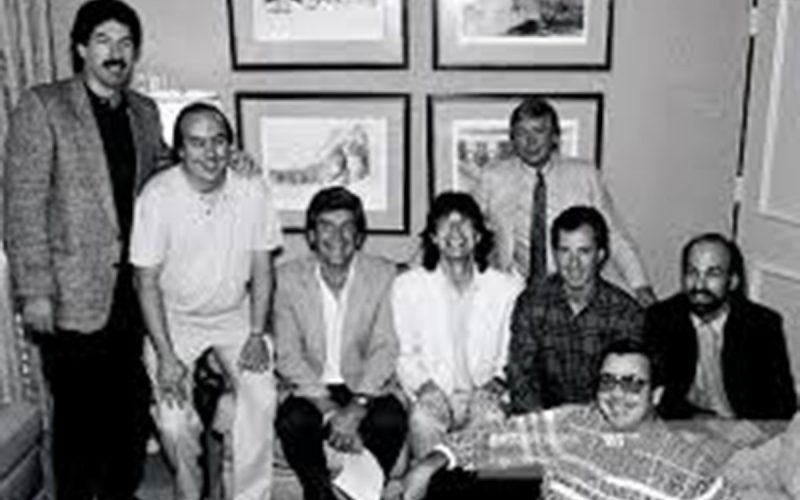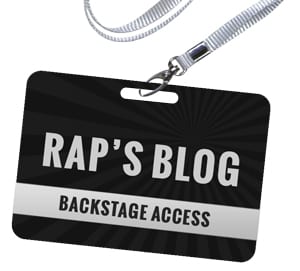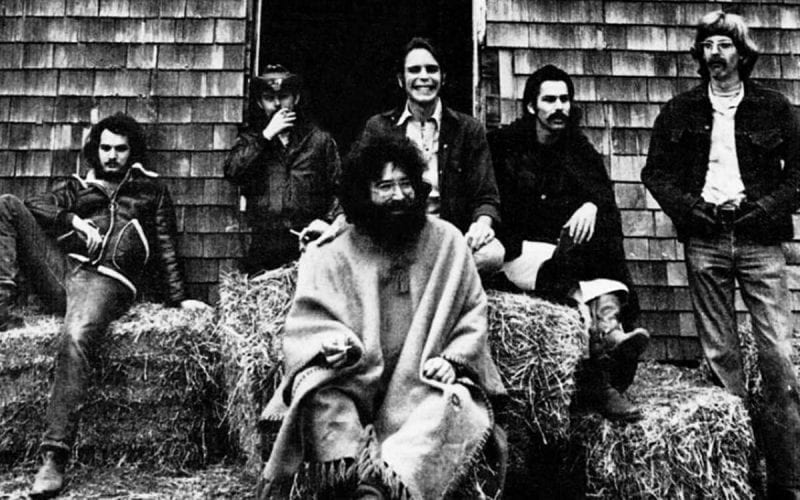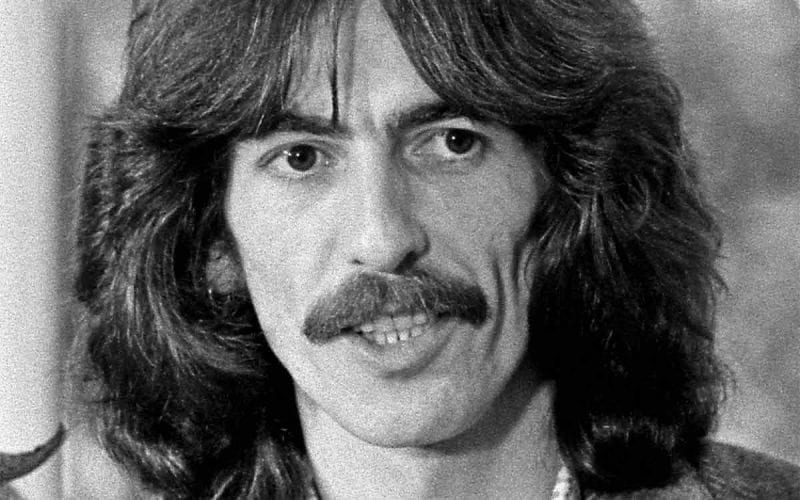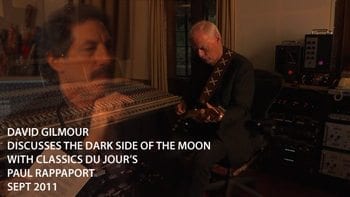
I have noticed over years that some artists lose their edge. Some record new albums with less of a work ethic that they had in the past. Perhaps they see creating a new album as just a calling card to shed some new light on their band and help set up a tour. Perhaps they have lost their drive to prove something, or just can’t find that wellspring of creativity they once flourished in.
That is clearly not the case with Roger Waters and his new album Is This The Life We Really Want? Roger’s first offering of new music in nearly 25 years. The press release says the album “is an unflinching commentary on the modern world and uncertain times. Waters’ forthcoming LP serves as a natural successor to classic Pink Floyd albums such as Animals and The Wall.” To this I have to fully agree.
The press release also begins by saying, “Roger Waters, the creative power and song writing force behind Pink Floyd…”
I kind of wish it would have said something like, “one of the major creative powers and song writing forces behind Pink Floyd.” That would have been more correct as it would imply the existence of other key creative powers of the band including Syd Barrett (who originated the band), David Gilmour, who wrote and sang much of Floyd’s best material, and also Rick Wright and Nick Mason who contributed greatly in the overall sound of the band.
I guess it’s really not that big a deal and an understanding a marketing ploy for sure. It’s just that Pink Floyd fans know the truth and have grown very weary of this “Hatfields vs. McCoys” feud and jockeying for power that seems to never end. Even the two biggest protagonists in that fight have had to admit how great that band was when they were all together as one united creative force.
Having said that, let’s not take anything away from what Roger Waters is putting forth here, real commentary and common sense about a world gone mad. It takes guts to put your feelings out there and take a stand, something that Waters, has never been short on—even if he sometimes finds himself in awkward positions.
In some ways I’ve always viewed Roger as a poet. Here are a couple of examples of lyrics from the new album that do not disappoint.
Excerpts from: “Déjà Vu”
If I were a drone
Patrolling foreign skies
With my electronic eyes for guidance
And the element of surprise
I would be afraid to find someone home
Maybe a woman at a stove
Baking bread, making rice, or just boiling down some bones
If I were a drone
The temple’s in ruins
The bankers get fat
The buffalo’s gone
And the mountain top’s flat
The trout in the streams are all hermaphrodites
You lean to the left but you walk to the right
Excerpt from: “Smell The Roses
This is the room where they make the explosives
Where they put your name on the bomb
Here’s where they bury the buts and the ifs
And scratch our words like right and wrong
Those are some major league lyrics folks. I’m sure I’m not the only one who will testify that at the ripe young at heart age of 73, Roger still has it. I think what’s great is that he hasn’t bothered with putting out new material until he felt moved to. We’ve all watched his outbursts over the years, even his largely unpopular anti Israel stance. But there are a couple of truths at work here that are important. The first happens to be one of my favorite quotes from Bruce Springsteen, “Trust the art, not the artist.” The artist is only human and may be flawed, but the art is True.
Roger Waters will be the first to tell you that he’s not perfect. Once when we were working together years ago on a drive to do an interview, he confided in me that he had a huge dark hole inside. He told me he’d lost his father in World War II when he was a very young boy, and went on to say: “And that’s where all this writing comes from. I keep trying to fill up this black hole inside with it. But you know what? No matter how much I write and record, I just can’t seem to fill it up.”
That shook me, and I really felt for him. As we know, tragedy can be a very powerful muse for artists. I remember Leonard Cohen once telling me that he had terrible luck with women, but that it made for great songs. Again, something quite negative but because it’s so genuine and authentic could be turned to create some very deep and meaningful words and music.
Another truth is that Roger just flat out loves to be controversial—he loves being that guy, and the attention it gets him. I don’t say this to be mean, it’s just part of his pathology, like Bruce Springsteen letting us know that he admits to loving and needing the adoration of his fans—that he lives to be onstage. I think that’s normal for poets and entertainers—hell what’s the point if you have no one to hear and appreciate your work?! And, thank God for it—for those artists, who have the ability to write their most inner feelings and say things for us that we can’t quite put into words ourselves–at least not in a larger, creative, and articulate way. Let’s face it, the story of The Wall is no picnic—Roger lived it and then he chose to put his tortured soul on display. Again, that’s a scary thing for an artist because he showed us his flaws. And remember, at the time Pink Floyd did not know how people would react to that, did not know if The Wall would be successful, if fans really wanted to know about Roger Waters’ inner workings. So a true artist puts him or herself out there and hopes that somehow the authenticity of that will connect to other people.
Here’s a personal story about Roger befitting “Backstage Access” where I was able to help him take his stand, but also figure a way out of one of those awkward moments that he might have had, offending the very people who had supported him over the years at rock radio.
When Roger toured the Radio K.A.O.S. album he brought with him Jim Ladd, one of the all time great free-form radio disc jockeys of Los Angeles who graced the legendary airwaves of KNAC, KMET, and KLOS. Jim is an old friend of mine and I had introduced him to Roger years before when I brought the Pink Floyd band to Jim’s house high in the Hollywood hills to be interviewed for the Wish You Were Here album. Since then, Roger and Jim had become friends and Jim played the part of the DJ on the Radio K.A.O.S. album. PS. You can still hear Jim Ladd and his incredible live radio show every evening from 4:00PM to 8:00PM Pacific time, that’s 7:00PM to 11:00PM Eastern time, on Sirius XM’s Deep Tracks channel.
RELATED: David Gilmour Discusses ‘Wish You Were Here’ with CDJ’s Paul Rappaport
I went to the Radio K.A.O.S Tour rehearsal in August of 1987, which was at the Civic Center in Providence Rhode Island. I was the V.P of Album Rock Promotion then for Columbia Records and we had done a promotion with a local radio station to invite some listeners to an afternoon rehearsal the day before opening night.
In the show there was a radio booth built on stage from where Ladd broadcasted to the audience. There was also a giant electronic ticker tape effect that ran the entire length, in front of the stage and that Jim controlled and put messages on throughout the show.
I’m watching the show and the tickertape messages, and to my shock I see that many of them are slamming the current state of rock radio and moreover, the people who program the format! Ladd had been very upset over the years (as many of us were) about how original FM free-form radio had mostly sold-out and gone corporate, using consultants and focus groups to help create playlists that focused solely on the most popular songs of the day. In this way, mostly playing the hits, larger ratings were achieved. In short, the creative art form of playing music in sets with themes and taking listeners on a musical journey featuring plenty of new music was pushed aside for more of a homogenized format to simply make more money. It was probably an inevitable evolution but Ladd, to his credit, had (and has to this day) never changed his approach and even gone without a job for years on end because he refused to “read cards” and play what he was told. He was very bitter about it at the time, and the venom was being poured out on these tickertape messages for all the world to see. Of course, one could easily make a case about raising the discussion and fighting the good fight for art’s sake, hoping to get radio back to a more organic place to serve the listener, and all of this fit right in with the spirit and overall message of the album. But the messages were very biting and condemned most all of the rock radio community at the time. Notes would flutter by making statements like, “Radio Sucks! Rock Radio consultants are the enemy! Rock radio programmers are in the audience tonight, let them know how you feel!” I understood the point but thought the presentation unfair as not every single station in America was programmed like this, and there were some consultants who I felt really understood the format and who were actually helpful for rock radio. Both Jim and Roger were letting their feelings be known no holds barred. I was scared for Roger because every single rock programmer and all the DJ’s across the country would be going to see this show, and if they saw themselves being dissed and took offense they could be incredibly turned off by the performance and with Roger himself. I could see a scenario where they might stop supporting him, and stop playing his records—especially the new Radio K.A.O.S. album that we were promoting and was the whole point of this tour!
On the other hand, I knew a lot of what Roger and Ladd were getting at was true and worth risking some controversy and a little edge to wake up people’s consciousness to what was happening in their treasured culture of rock radio. Sometimes making a point can sting, and that is one of the calling cards of a Roger Waters’ album and tour. So, what to do? The problem was the all-encompassing, brazen statements that Roger and Jim had decided to put forth. I knew the ideas were correct but I also knew the way they were stated would be very dangerous and could possibly kill Roger’s career, or at least put a big dent in it, and no post tour mea culpa (not that Roger would ever consider that) would ever bring him back in good favor.
I knew I had to talk to Roger about it, and it was urgent that I do so immediately because the show was opening the very next evening. I thought about saying nothing, which would have been much easier believe me, but then felt overall it was the professional thing to do. Roger may not have understood how egregious this could be perceived, and I also knew that Jim would never want to hurt his friend, even for the sake of a righteous cause. But, I knew that this was tampering with the art, something totally forbidden in my world. I needed to somehow keep the integrity of the painting, so to speak, but just relieve it from some of the darker shimmers that could ruin the artist’s career. So, after the rehearsal I quickly approached Roger, apprised him of the situation and he said, “Ok, I hear that, meet me backstage in about ten minutes to discuss.”
I knew this was not going to be easy. Roger is a very headstrong person and fiercely competitive. But I did have a good relationship with him at the time and I also knew he was a very smart man—I was hoping to appeal to his larger common sense.
I was ushered into a room backstage where I expected to meet Roger by himself but lo and behold I walked into a rather large room that appeared to be the band’s dressing room replete with tables of food and drink. That part was okay, but as I turned the corner I saw the entire band there with Jim Ladd all sitting in seats as if they were in a courtroom. Roger turned to all of them, and said something like, “Mr. Rappaport appears to have a problem with our show. Please expound.”
Talk about being put on the spot! Now I had to explain this to the entire troop of musicians who felt very strongly about the show they were in, and bring the whole “jury,” so to speak, to understanding my side. Yikes! It did feel like a courtroom with all of them sitting together on one side and me all alone, standing in front of them trying to make my case. The mission–how to get Roger and all of them to agree to a compromise without lessening the shows’ power and integrity, and now to further complicate things, how to do so without Roger losing face in front of all his people.
I took a deep breath and began my speech in the most polite and respectful manner. I told them that I was one of Rogers’ and Jim’s biggest fans. But I also told them that if their overall message was perceived wrong and not understood correctly by the press, radio, and the masses, that this misunderstanding could cause a backfire and possibly a catastrophe–their show might not only lose the credibility it deserves, but also soon might not be promoted by the very people they were trying to make a point to. It was a slippery slope to be sure, and I’d be lying if I told you my knees weren’t a bit wobbly standing there pretending to be Perry Mason. I finished by saying: “You can make your points, but just think about saying some of them in a less harsh way. That way, you keep your credibility but don’t blow off the people you need to be your partners in this.”
Of course the thought of compromising one’s art is anathema to any true artist. I felt like the bad guy and the good guy all at the same time—a very weird place to be.
So Roger stands up, wanting to be the hero of the crowd and yells, “BUT WE’RE ARTISTS!” This prompts the saxophone player (a very tall thin man who is now drunk off his ass) to stand up a little wiggly-wobbly and repeat in slurred speech,…“YEAH, WE’RE UMMM…ARTISTS!!” He then leaps (I’m not making this up) high enough to grab the ornate chandelier which is hanging over my head, swings himself across the room, and lands behind me on a table full of food. Wham!! He hits the table and passes out right there, arms and legs sprawled out, over spilled drinks, pasta salad, and sandwiches! It did bring a little levity to the situation and we all had a good laugh—it really was hysterical and thank God, lightened the mood. PS. After that incident that sax player was never seen or heard from again! The tour went on without him.
Anyway, I could see what was going on. Roger was indeed standing up for his art, but also trying to put a good face on the situation and be a hero and leader to his peeps. It was really starting to feel like me against the world at this point, but I calmed everyone down and carried on. In the end I told them of course it was their decision, and I knew they had to be true to their art, but I also believed there was really a way to do this without shooting themselves in the foot, or more like the head.
Roger said, “Fine, we’ll take it under advisement, but don’t expect much.” The crowd rumbled approvingly. They all got up to leave and I pulled Roger aside, alone. I was honest and as down to earth as I could be, “I know how you feel, and I am a huge fan of your work, but I wouldn’t be coming on so strong if I didn’t think it was a do or die situation. Honestly, you could really hurt yourself if you don’t change some of that wording.” Then he surprised me, Roger had listened and had given the situation some real thought. He sighed, he was tired, “Ok, Ok, I get it. But you are the one who has to break it to Ladd and help him with it.”
Great, now I could finally breathe a sigh of relief, but at the exact same moment I realized, crap! Now I have to break it to Ladd–go sit with one of my best music friends in the world, and get him to understand that I am not asking him to compromise his legendary ideals, but just to put them out there in a different fashion. This I knew would be even more difficult than convincing Roger Waters.
“Ladd,” I caught up to him in the hallway. “Listen buddy, you and I need to talk.” He stared at me with an upset look in his eyes, “Yeah, here it comes.” I felt sick, terrible. I have always looked up to Jim Ladd and what he stands for—which are the same things I do. Yet, he had the strength to defy “the Man,” and never compromise his art form, while most of us struggled to find some middle ground our souls could live with coming from the hippy movement and joining a more traditional society.
He opened the door to his hotel room, we walked in, sat on the beds and we talked. I told him that I knew what he wanted to accomplish and that because I was square in the middle of the rock radio industry I could be of help to let him know who some of the cooler radio consultants were, so they didn’t get wrongfully slammed, and also to help to rewrite some of the messages to read just a touch less harsh. He really didn’t want to do any of this. I could tell he was struggling with his own conscience. Of course, the overriding fact to all of this was he did not want to put his friend in jeopardy, so he went down the road to try and a take a stab at it.
Jim and I stayed up all night and went through the entire show line by line. It was a great example of how if people can listen to each other, how something good or even great can come of it. It’s how our Government used to work. So there we were, Senators from opposite camps, trying to write a bill that we both could live with and one that would serve all parties the best.
Man, was he tough–and I thought Waters was stubborn! That’s why it took all night–Jim wanted to know the ins and outs of e-v-e-r-y thing before he’d change a single word. And some, to his credit, he would not budge on, and I would have to live with that, and some thank God, he understood and figured out a way to get his point across but with different kind of language. I literally walked out of his room when the sun was coming up. In the end it was still a very exciting and powerful show with very strong messages. The radio community felt a little sting but saw it as Truth and did not take personally the larger points trying to be made. Jim Ladd got to be a rock star and the tour was a success. Hooray! A happy ending.
Awkward moments or not, Roger Waters is quite a force to be reckoned with. I have fond memories of working with him and Pink Floyd back in the day. I have only heard two songs from Is This The Life We Really Want? Yet, knowing his work intimately I can already say that this is could possibly be the best solo album of his career. If you are an old fan or a possible new one, please support the artist by buying the music and please don’t just find a way to steal it from the Internet. This new exciting release deserves your utmost attention and support. Roger Waters is still very relevant, as an artist and a messenger giving us much to think about.
Here is “Déjà vu” from Is This The Life We Really Want? Recently performed on The Late Show with Stephen Colbert:
“Smell The Roses” audio:
“Hey you! Don’t tell me there’s no hope at all,
Together we stand, divided we fall.”–Pink Floyd
Rap~
©Paul Rappaport 2017


